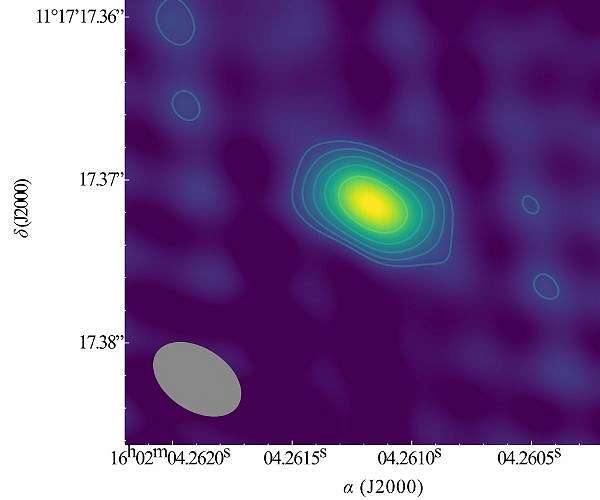If nothing else catches your attention in the title then surely ‘hypernebula’ does! There are some amazing processes scattered around the cosmos, of particular interest are the fast radio bursts (FRB). These brief flashes of radiation happen without warning…until now. A team in the Netherlands have identified a second FRB as coming from within a hyper nebula – a dense and highly magnetised cloud of plasma that is illuminated by a powerful but unknown source!
FRBs are short outbursts of radio waves which last only a fraction of a second. They seem to originate from distant galaxies and one of the first to be discovered was FRB 20121102A. A second FRB source has been confirmed in the paper by the Netherlands team, this one known as FRB 20190520B. It was discovered by the FAST telescope in China and appears to be associated with hyper nebula just like the other repeating FRBs. Investigations go further revealing that it seems to be associated with a more constant source of radio waves.
The team followed up on their observations using the Very Long Baseline Interferometer (VLBI) which is a network of radio telescopes spread across Europe. Interferometry involves combining the signal form multiple dishes in different places. Using interferometry like this enables astronomers to capture images with a resolution far greater than they could achieve from the individual dishes.
Their observations from the team, led by Shivani Bhandari suggest the size of the host hyper nebula was of the order of 30 light years across, three times the size of the Crab Nebula. They were also able to measure the luminosity revealing it was around a hundred thousand times that of the Sun. This suggests the source may well be an extremely magnetic neutron star known as a magnetar (a neutron star is the highly compressed dense core of a star that went supernova).
Magentars are curious objects but one thing we do know is that they can produce a powerful stream of charged particles that create the surrounding nebulosity and it is from here that the radio source is being emitted. The magnetar inside FRB 20190520B is likely to be generating radio emissions which are prt of the driving force of the FRBs. The team have worked through their data and believe the magnetar to be around 4 and 1,900 years old making and the hyper nebula to be around 900 years old. Compared to most objects in the Universe, these are very very young.
One of the magic things about science is that there are often alternative theories. In the case of these repeating FRBs it may be that the hyper nebula is powered not by magnetism but by gravitation. In systems where there is a black hole or neutron star devouring matter from a nearby companion there could be a burst of radio waves as a result of powerful emissions.
Whether driven by magnetism or gravitational potential energy, these two FRBs are the first two that seem to repeat and are associated with a hyper nebula. Interestingly they are both hosted in low mass dwarf galaxies. They clearly show high levels of activity in young and energetic FRBs but it is interesring that even their older counterparts still emit radio bursts. There are many mysteries about FRBs but these latest observations hope to start to unravel their mysteries.
Source : Super sharp images reveal a possible hypernebula powered by a source of fast radio bursts

